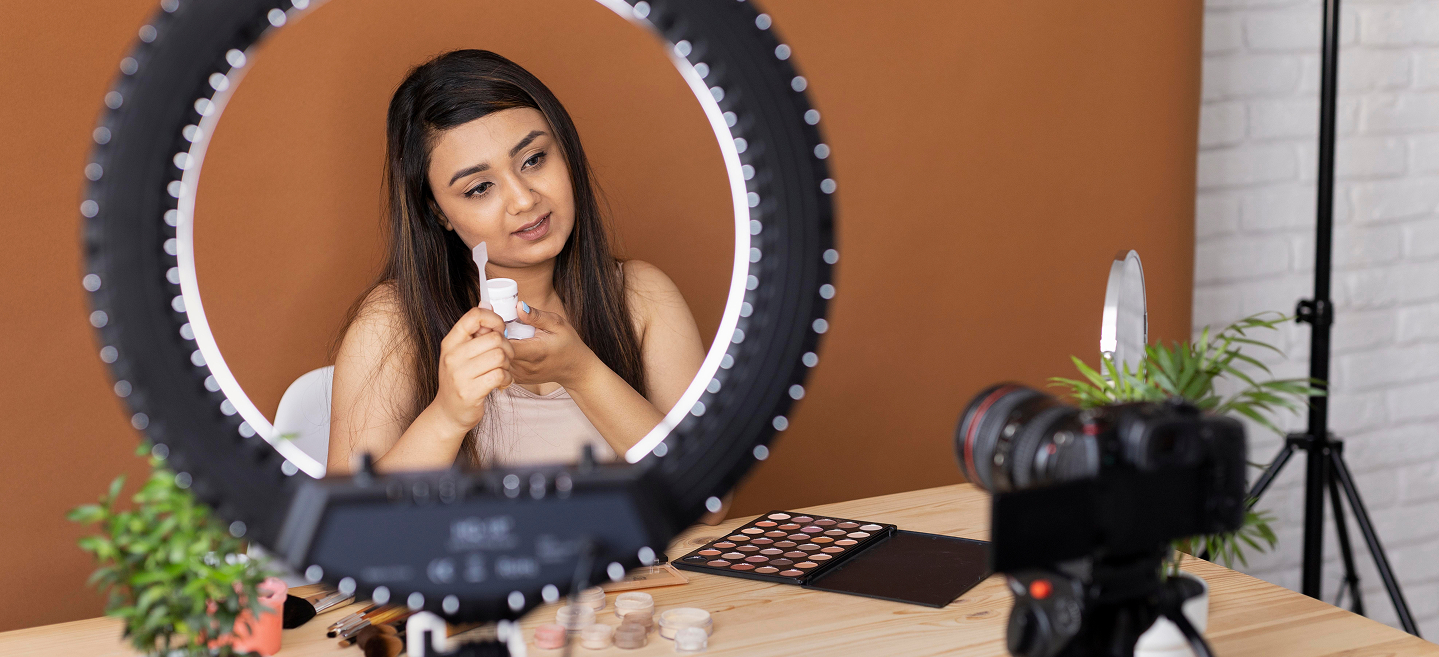1 Nano-influencer
They are a perfect example of good things coming in small packages. Nano-influencers typically have 1,000 to 10,000 followers and are known for their tight-knit communities. Their content feels personal, relatable, and often more trustworthy than what you’d get from someone with hundreds of thousands of fans.
These creators are everyday people, such as students, niche hobbyists, or small business owners. They post about their passions and genuinely connect with their audience. Though they don’t bring massive reach, nano-influencers are great for building genuine connections.
Nano-influencers do their job quite well, from actively replying to comments, sharing stories about their followers, and even meeting them in person.
Essentially, they’re like celebrities leading normal lives, making them more human and relatable.
For small brands or local businesses, nano-influencers are a smart starting point. Onboarding them offers these perks: they are budget-friendly, open to collaborations in exchange for free products, and accessible. Even for bigger brands, they work well for targeted micro-campaigns in specific regions or niches.
If your goal is trust, authenticity, higher sales and genuine buzz, these tiny-titans are worth collaborating with.
76.86% of all Instagram influencers are nano-influencers. So, there are many options in the influencer marketing industry. You just need to find the right influencers.
2 Micro-influencer
Usually, micro-influencers have between 10K and 100K followers. Their communities are larger than nano-influencers, but still tight enough to act on a request or command. That’s what makes them super-effective for brands aiming for both awareness and trust.
Their followers come to them for advice, reviews, and inspiration in that niche. Because of this, micro influencers often have a higher conversion rate than mega-celebrities.
From a brand perspective, micro influencers are a smart investment. They charge less and make fewer unreasonable demands, while offering excellent engagement. Collaboration is also easier since they’re the rising stars in a specific domain. Many are used to undertaking brand partnerships and understand how to create content that aligns with your goals while still sounding authentic.
Need results without draining your marketing budget? These goldilocks influencers make up 18.23% of all Insta influencer accounts and are your go-to choice in your field of interest.
Need a perfect product launch pitch or dazzling discount code campaign? They’re perfect.
And the best part? You can onboard multiple micro influencers across different niches and you’ll still save money and expand your reach without compromising credibility.
Micro-influencers focus on organic growth, so collaborating with them gives you the best ROI.
3 Macro-influencer
Here comes the big fish. Macro-influencers have follower counts ranging from 100K to 1 million. They are often well-established in their field, like popular YouTubers, top-tier bloggers, or IG personalities with years of consistent content.
With their larger audiences and the ability to reach many through their top-tier voices, you get massive visibility.
A single post on their account and you can get thousands (or even hundreds of thousands) of eyeballs. That’s like a massive shoutout. Macro-influencers are ideal for creating hype, building brand authority, and giving your product a polished, professional touch.
But there’s a catch. As their audience grows, engagement tends to dip. It’s inevitable because you can’t keep everyone happy.
Though the reach is impressive, their connection with followers might not be as personal as what you’d get from niche creators. People follow them for content, not always for conversation.
Partnering with macro influencers can be costly. It’s like reaching out to a celebrity. You’ll likely need a large budget, but you also get a higher production quality, polished posts, and access to a broader audience.
If your brand is ready to scale, launch nationwide influencer marketing campaigns, or boost your image in a crowded market, these Big-Ms are a strong bet.
Just make sure their content and target audience align closely with your values, or the reach won’t mean much.
4 Mega-influencer
And here comes the elite voices. Mega influencers are social media celebs. They boast over a million followers and have star power that extends far beyond one platform.
This list includes film stars, athletes, pop artists, and reality TV personalities who also dominate TikTok, Instagram, or YouTube.
With such a giant name, you’re getting serious exposure. One post means thousands of eyeballs. If you’re after viral reach, get an A-lister on board.
Big brands often collab with these influencers during major product launches, global influencer campaigns, or seasonal promotions.
Of course, all that attention comes at a cost, literally.
These influencers charge top dollar. And while the exposure is huge, the engagement might not be as deep as expected. Why would a fitness influencer’s audience engage with a pizza store discount campaign.
So, choose wisely. If their personal brand or reputation clashes with yours, it can do more harm than good. Always do your homework.





